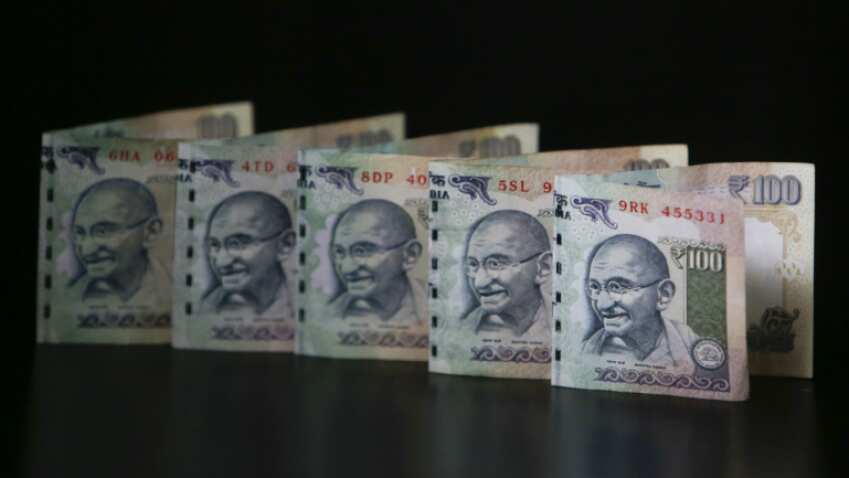Indian rupee plunge beyond most outlying expectations; further fall expected
The depreciation of the rupee has been beyond the most outlying expectations at the beginning of this year. While the valuations might suggest that the slide is overdone but global factors indicate that in the near-term rupee might come under further pressure.

The depreciation of the rupee has been beyond the most outlying expectations at the beginning of this year. While the valuations might suggest that the slide is overdone but global factors indicate that in the near-term rupee might come under further pressure.
While analysing if a currency has performed better than others or not, the biggest problem is that of selecting the time frame for comparison. The Indian rupee has depreciated the most among major emerging market (EM) currencies in the last one month and the most amongst the Asian majors this year. But if we look at a longer time frame like five years then the rupee is somewhere in the middle. The selection of base, therefore, makes it impossible to accurately comment on the right levels for a currency vis-a-vis the others.
Now if one adds the productivity differential of 2% per annum to the REER then the correct value for the rupee should be around 10% stronger or at 66 levels. The other way to explain this is that REER as a concept takes into account the regular import and exports of a country while it ignores the capital account.
India is a high growth country which attracts significant capital investments, therefore it is imperative that the same is taken into account while determining the right value of its currency. Given the two arguments above, it is logical to assume that the broad range for the dollar-rupee is between 66 and 73; therefore the current levels of 74 cannot be justified theoretically and can only be termed as a market adjustment.
Having said the above, we would still think that rupee in the short-term can come under further pressure as crude oil continues to trade near $85 levels and technically $90 seems a possibility.
The last week witnessed equity markets reacting to the sell-off in the rupee for the first time in many years which perhaps indicates that the depreciation of local currency has started worrying other asset classes as well. Consequently, the government’s and Reserve Bank of India’s (RBI) patience is also running out because of which we have seen a spate of measures aimed at facilitating capital account inflows into the country especially through the ECB route. But the fact remains that capital account inflows are difficult to come by when sentiments are unsupportive.
At this juncture, it is important for the authorities to introduce measures that would definitively reduce the net dollar demand from the market. This could be similar to an oil swap window wherein the OMCs get a direct supply of dollars needed for import payments from the RBI or something similar to the foreign currency deposit scheme of 2013. Any such scheme has its own complexities and costs which the authorities have to weigh carefully but as the rupee slides the chances of a major policy led intervention increases which can result in sharp two way movements. In the given context the rupee should trade in the range of 73 and 74.60 in the near-term.
Watch This Zee Business Video Here:
The writer is senior group president, financial market, YES Bank
By: Rajat Monga
Source: DNA Money
Get Latest Business News, Stock Market Updates and Videos; Check your tax outgo through Income Tax Calculator and save money through our Personal Finance coverage. Check Business Breaking News Live on Zee Business Twitter and Facebook. Subscribe on YouTube.
RECOMMENDED STORIES

Fundamental picks by brokerage: These 3 largecap, 2 midcap stocks can give up to 28% return - Check targets

SBI Senior Citizen Latest FD Rates: What senior citizens can get on Rs 7 lakh, Rs 14 lakh, and Rs 21 lakh investments in Amrit Vrishti, 1-, 3-, and 5-year fixed deposits

Tamil Nadu Weather Alert: Chennai may receive heavy rains; IMD issues yellow & orange alerts in these districts

SIP+SWP: Rs 10,000 monthly SIP for 20 years, Rs 25 lakh lump sum investment, then Rs 2.15 lakh monthly income for 25 years; see expert calculations

Top 7 Mutual Funds With Highest Returns in 10 Years: Rs 10 lakh investment in No 1 scheme has turned into Rs 79,46,160 in 10 years

SIP vs PPF: How much corpus you can build in 15 years by investing Rs 1.5 lakh per year? Understand through calculations

Retirement Planning: Investment Rs 20 lakh, retirement corpus goal Rs 3.40 crore; know how you can achieve it
10:37 AM IST










 Currency market update: Rupee settles 4 paise lower at 83.96 against US dollar
Currency market update: Rupee settles 4 paise lower at 83.96 against US dollar Rupee rises to 83.49 against US dollar in early trade
Rupee rises to 83.49 against US dollar in early trade Rupee slips to end at 83.52 vs dollar
Rupee slips to end at 83.52 vs dollar  Rupee slips to end at 83.52 vs dollar on Wednesday
Rupee slips to end at 83.52 vs dollar on Wednesday Currency Market News: Rupee opens on a flat note at 83.50 vs dollar
Currency Market News: Rupee opens on a flat note at 83.50 vs dollar